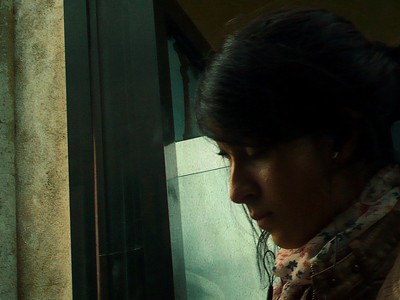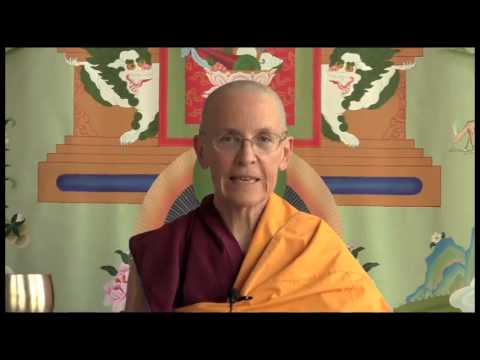Meditation outline: Anger

Anger can arise towards people, objects, or our own suffering (e.g., when we’re sick). It arises due to exaggerating the negative qualities of a person, object, or situation, or by superimposing negative qualities that aren’t there. Anger then wants to harm the source of the unhappiness.
Patience is the ability to remain undisturbed in the face of harm or suffering. Being patient does not mean being passive. Rather, it gives the clarity of mind necessary to act or not to act.
Mind is the source of happiness and pain
- Remember a disturbing situation in your life. Recall what you were thinking and feeling. Examine how your attitudes created your perception and experience.
- Examine how your attitude affected what you said and did in the situation.
- Was your attitude realistic? Was it seeing all sides of the situation or was it viewing things through the eyes of “me, I, my and mine”?
- Think of how else you could have viewed the situation and how that would have changed your experience of it.
Conclusion: Determine to be aware of how you are interpreting things that happen in your life and to cultivate beneficial and realistic ways of looking at things.
Is anger destructive?
By examining your own life experiences, check:
- Am I happy when I’m angry?
- Do I communicate effectively with others when I’m angry?
- How do I act when I’m angry? What is the effect of my actions on others?
- Later, when I’m calm, do I feel good about what I said and did when I was angry? Or is there a sense of shame and remorse?
- How do I appear in others’ eyes when I am angry? Does anger promote mutual respect, harmony, and friendship?
Looking at the situation from the other’s viewpoint
- Usually we look at a situation from the viewpoint of our own needs and interests and believe that how the situation appears to us is how it objectively exists. Now, put yourself in the other’s shoes and ask, “What are my (i.e., the other’s) needs and interests?” Se how the situation appears in the other’s eyes.
- Look how your “old” self appears in the eyes of others. We can sometimes understand why others react to us the way they do and how we unwittingly increase the conflict.
- Remember that the other person is unhappy. Her wish to be happy is what motivates her to do whatever it is that disturbing us. We know what it’s like to be unhappy, so try to develop compassion for this person who is unhappy, but who is exactly like us in wanting happiness and avoiding pain.
Transforming criticism
- Examining whether what the other says is true or not. How he says it isn’t important, it’s the content.
- If what he says is true:
- We say we want to improve ourselves. This person is telling us how and thus is kind for helping us in this way.
- If what he said is as true and obvious as if he were to say “You have a nose on your face,” why become angry at what there is for others to see?
- If what he says isn’t true, why become angry? It is like he is saying, ” You have horns on your head.” We know we don’t, so why become angry at what is clearly another’s misapprehension?
Our buttons
When we are angry, it’s usually because someone pushed our buttons—she said or did
something that touched our sensitive points.
- She can push our buttons because we have them. Our buttons are our own responsibility.
- Examine what your buttons are and think about how to free yourself from them.
- Examine how your attachment to a person, thing, relationship, or situation is related to the anger you experience when that thing is harmed, denied, or ended.
- Apply antidotes to that attachment in order to protect yourself from pain and anger.
How did we come to be involved in the situation?
- Examine what actions we did recently that directly or indirectly led to the conflict. This can help us understand why the other person is upset and how the situation evolved. It also may reveal our own hidden motives or careless behavior.
- Recognize that unpleasant situations arise due to our having harmed others earlier in this life or in previous lives. If we see our own destructive actions (negative karma) as the principle cause, we avoid blaming others. Most importantly, we can learn from past mistakes and resolve to abandon acting harmfully in the future.
Can we do something about it?
Ask yourself “Can I do something about this unpleasant situation?”
- If so, than anger is out of place because you can improve the situation.
- If not, than anger is useless because nothing can be done. To paraphrase St. Francis: Please guide me to change what can be changed, to accept what can’t, and to be able to distinguish between the two.
The kindness of the person who harms us
Remember the kindness of those who harm us:
- They point out our mistakes so that we can correct them and improve our character.
- They give us the opportunity to practice patience, a necessary quality in our spiritual development. To become a Buddha, we need to perfect our patience. To develop patience, we need someone who harms us. We can’t practice patience with those who are nice to us. Therefore, those who harm us are kind because they provide an essential condition for our spiritual development.
Is it their nature?
Think of the person who harmed you and ask, “Is it this person’s nature to act like this?”
- If it is, than there is no reason to be angry, for it would be like being annoyed at a fire for burning.
- If it isn’t, again anger is unrealistic, for it would be like getting angry at the sky for having clouds in it.
The taking and giving meditation
In situations in which we can help others by acting or speaking, we could do that. In situations in which we can’t, doing the taking and giving meditation is very effective.
- Generate love, the wish for others to have happiness and its causes.
- Generate compassion, the wish for others to be free from pain and problems and their causes.
- Do the taking and giving meditation:
- Take the problems and confusion of others by inhaling it in the form of black smoke.
- This turns into a thunderbolt or bomb which completely obliterates this black lump of selfishness and ignorance at your heart.
- Feel the open space, the lack of all wrong conception about yourself and others.
- In this space, imagine a white light that radiates to all beings and think that you are increasing and transforming your body, possessions, and positive potential into whatever others need and giving it to them.
- Imagine them being satisfied and happy and rejoice that you’ve been able to bring this about.
When you feel overwhelmed, frustrated, or helpless in confront of the world’s problems or suffering:
- Do the meditations “Is it their nature?” and “Can we do something about it?” Because we are in cyclic existence, it’s natural that these things arise. We can accept them as what is, and at the same time, be remembering that all beings have the Buddha potential, we can generate the motivation to become a buddha ourselves so that we’ll have the compassion, wisdom, and skill necessary to benefit others more effectively.
Venerable Thubten Chodron
Venerable Chodron emphasizes the practical application of Buddha’s teachings in our daily lives and is especially skilled at explaining them in ways easily understood and practiced by Westerners. She is well known for her warm, humorous, and lucid teachings. She was ordained as a Buddhist nun in 1977 by Kyabje Ling Rinpoche in Dharamsala, India, and in 1986 she received bhikshuni (full) ordination in Taiwan. Read her full bio.


